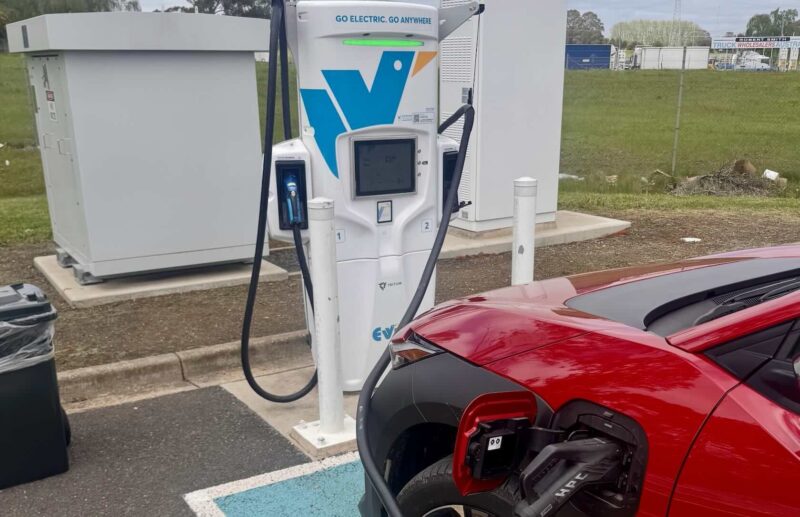Walking around the halls of Everything Electric and seeing the excellent products on display, the people queuing for test drives and clambering all over the vehicles, it is hard to believe that every driver isn’t either driving an EV or queuing up to buy one. Unfortunately they aren’t, and this seems like a good moment to examine why.
Not only is this a good week because of all the fun of Everything Electric, this is also the week in which the Senate committee on Information Integrity on Climate Change and Energy met. This week the CEO of the Electric Vehicle Council, Julie Delvecchio, and EVC Head of Policy, Aman Gaur, appeared before the enquiry in Melbourne to highlight the misinformation themes that are shared widely across both social networks and by media personalities and outlets across the world.
The commonly seen falsehoods and their refutations I have taken directly from the EVC’s submission to the inquiry:
- “EVs catch fire more often than petrol cars” — untrue; per 100,000 vehicles, international evidence shows petrol cars are 5-20 times more likely to catch fire and in the majority of EV fires, the battery is not involved. Only 12 EV battery fires have been verified in Australia since 2010.
- “EVs produce more emissions over their lifetime” — contradicted by CSIRO and IEA lifetime emissions analyses: Despite higher manufacturing emissions associated with producing the battery, the battery EV’s cumulative emissions are lower than those of its internal-combustion equivalent after 2 years.
- “EV batteries go to landfill after a few years” — untrue, modern batteries are expected to outlast the car and have 8-10 year warranties. Vehicle batteries often have a second life in stationary storage and more than 95% of their metals and minerals can be recycled.
- “EVs will overload the grid” — AEMO modelling shows demand impact is manageable with smart charging.
I can be fairly confident that every single reader of this article has heard or seen one of these nuggets of anti-EV propaganda on the TV, in print, online, or spouted by some bore holding a tinny at a party, and probably had to dispute them at a barbecue, in the pub, or in the comments sections of articles across the web.
The Automotive Marketing Machine
However, this misinformation and disinformation problem is compounded by an automotive industry that is far from committed to selling EVs. In FY24 the automotive industry spent $690 million on advertising, and this is not even the whole scope of the automotive marketing and PR spend. The industry spends another sizeable portion on putting cars in the hands of journalists and key customers, drive and demo days, dealer promotions, sponsorships of sports teams and local events. The automotive marketing machine is huge.
Toyota, the biggest vehicle OEM in Australia by far, was the 8th biggest spender on advertising overall in FY2024. The top ten in FY24 rounds out with 2. Hyundai, 3. Mitsubishi, 4. Kia, 5. Nissan, 6. Volkswagen, 7. BMW, 8. Mazda, 9. American Special Vehicles, 10. Isuzu UTE. Looking down that list of brands, only a few of them had EVs to sell in that period.
Nielsen also breaks out spend on EV advertising—$66.5 million, 9.6% of the total in FY24 and up a massive 711% since FY21. Good news? In June of 2024, EV sales set a record 8% of the total with Tesla, BYD, BMW, and Volvo racking up the big numbers. Only one of those brands is represented in the top 10 spenders on automotive advertising.
So how does this link back to misinformation and disinformation? Most of the biggest spenders on advertising do not have BEVs to sell or only have a small token effort. My most recent EV drive was in the somewhat half-baked Toyota bZ4X, launched in February 2024. Its sales in FY24 weren’t troubling the top ten in June 2024. Toyota were spending on EV advertising with the “Tell Barry” campaign. Nonetheless, spending only 9.6% of advertising spend on EV advertising betrays a distinct lack of ambition.
Who Pays for Automotive Media?
The other side of the automotive marketing and PR coin is the automotive press. There is no doubt that many Australians love their cars and love to consume automotive content—read about cars, watch videos about cars, listen to podcasts about cars. Australian media is there to meet that demand. All of the major media companies feature automotive coverage: 9 has Drive, 7West has Car Expert, and News Corp features automotive coverage across its mastheads. There are independent titles like Which Car, owned by Motoring News Network.
What is notable is that many of these titles sit outside the paywalls of their associated news sites. You can read them for free when you have to pay for the news content. When something is free, you always have to ask who is paying for it—or another way of putting it is when you read something free, you, the reader, are the product, packaged and sold to those who want to sell you something. (Noting, of course, that you aren’t paying to read this article and you are seeing adverts around and through my words).
The automotive media is there to sell cars, to capture automotive advertising, marketing, and PR spends. It is part of what funds commercial media and the programmes we watch on TV, the news we read, the radio we listen to. There’s nothing wrong with this—this is just simply how our economy works.
However, if the brands spending the most money on advertising don’t have much to sell by way of EVs, does this have an influence on the way automotive journalists cover them? Does it influence the talking points they choose to focus on in print and on breakfast TV? What is clear, though, is that in today’s media climate, controversy and sensationalism generate clicks and eyeballs, and these feed through into advertising revenue.
The Simple Prescription
So there’s a simple prescription for the EV industry: if you want to sell more EVs, if you want to change the conversation, if you want to get some of the loud mouths in the automotive press to turn off the insidious drip drip of misinformation and disinformation on breakfast TV—spend and spend more on advertising, marketing, and PR.
Spend your money on new media voices like Everything Electric, The New Jones, and The Driven (we have to eat as well). Spend your money on traditional media. Don’t forget that Australia is one of the most pay-for-play media markets on the planet. Take control of the coverage, take control of the narrative.
There is one more piece of advice. Now is not the time to be focussing on products and brands. A walk round Everything Electric today will show you that there are some truly amazing EVs to buy at every price point, many of which are now cheaper than their petrol equivalents. Right now the industry needs to be spending collectively to sell the idea of electric motoring. Most Australians are completely oblivious to the fact that driving an EV is a safe, practical, and simple choice you can make today. Most Australians are unaware that driving an EV is awesome.

Ed Lynch-Bell is Principal at Second Mouse, dedicated to building more sustainable energy tech and mobility products, services and businesses. Ed is also a co-host of the Melbourne and Sydney EV Meet-ups, bringing the e-mobility industry together.


